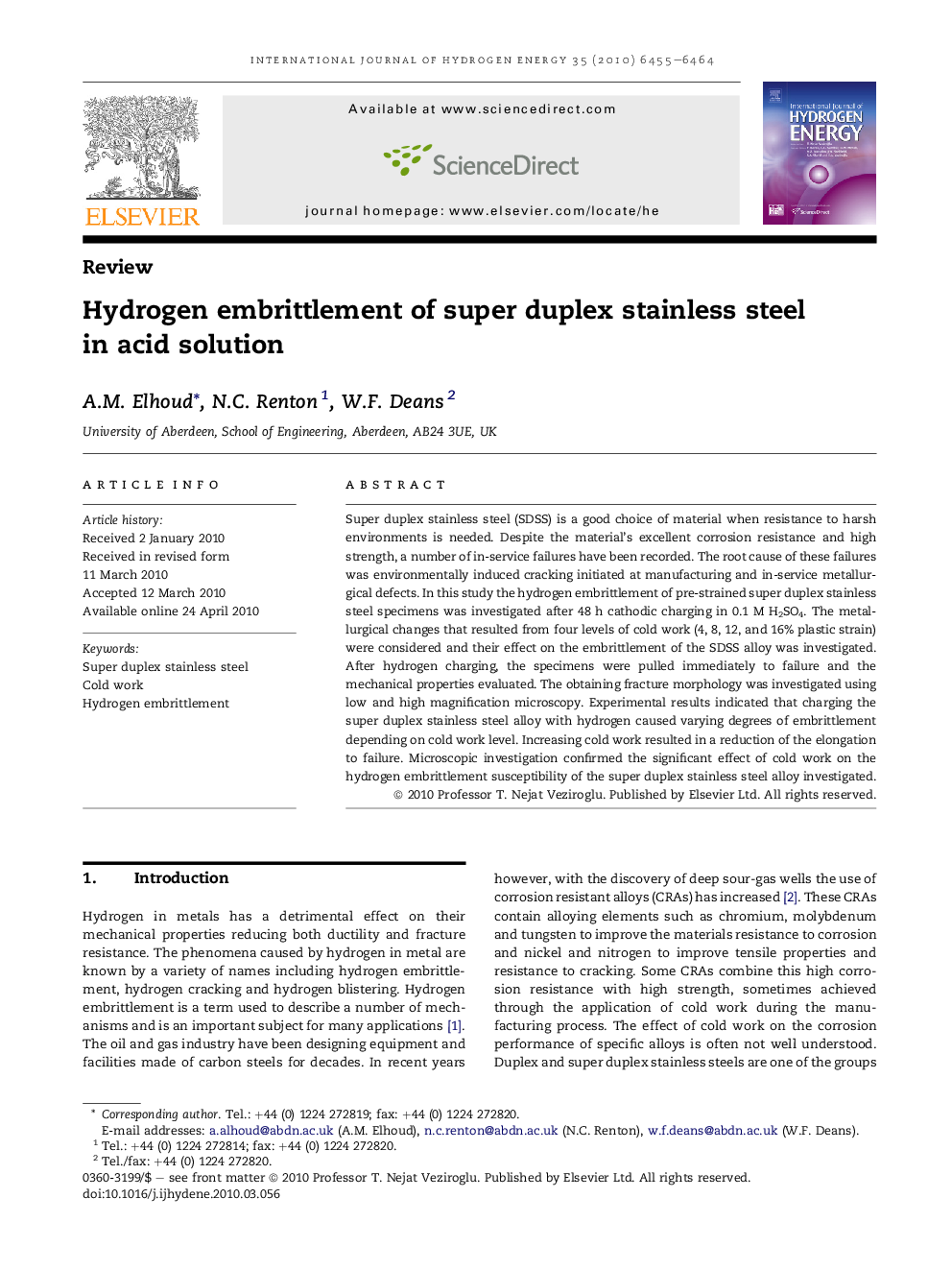| Article ID | Journal | Published Year | Pages | File Type |
|---|---|---|---|---|
| 1277108 | International Journal of Hydrogen Energy | 2010 | 10 Pages |
Super duplex stainless steel (SDSS) is a good choice of material when resistance to harsh environments is needed. Despite the material’s excellent corrosion resistance and high strength, a number of in-service failures have been recorded. The root cause of these failures was environmentally induced cracking initiated at manufacturing and in-service metallurgical defects. In this study the hydrogen embrittlement of pre-strained super duplex stainless steel specimens was investigated after 48 h cathodic charging in 0.1 M H2SO4. The metallurgical changes that resulted from four levels of cold work (4, 8, 12, and 16% plastic strain) were considered and their effect on the embrittlement of the SDSS alloy was investigated. After hydrogen charging, the specimens were pulled immediately to failure and the mechanical properties evaluated. The obtaining fracture morphology was investigated using low and high magnification microscopy. Experimental results indicated that charging the super duplex stainless steel alloy with hydrogen caused varying degrees of embrittlement depending on cold work level. Increasing cold work resulted in a reduction of the elongation to failure. Microscopic investigation confirmed the significant effect of cold work on the hydrogen embrittlement susceptibility of the super duplex stainless steel alloy investigated.
